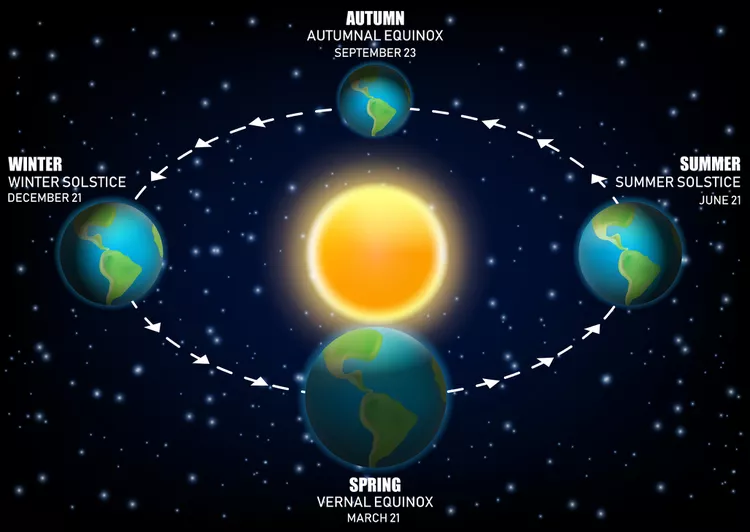Distinguishing Meteorological and Astronomical Seasons

While the passage of days is marked by the daily sunrise and sunset cycle, the changing seasons—spring, summer, fall (autumn), and winter—signify the passage of a year on Earth. The way seasons are measured can vary, relying either on Earth’s relationship with the Sun (astronomical) or on weather patterns (meteorological).
Meteorological Seasons
The concept of meteorological seasons, although less familiar to many, is based on the changes observed in nature, particularly the fluctuations in air temperatures throughout the year. These seasons are divided into four three-month periods, with each period reflecting similar temperature patterns.
In the Northern Hemisphere, meteorological summer spans June, July, and August, corresponding to the warmest months. Conversely, meteorological winter encompasses December, January, and February, marking the coldest months. Spring (March 1 to May 31) and fall (September 1 to November 30) serve as transition seasons between summer and winter.

Astronomical Seasons
Astronomical seasons, on the other hand, have been recognized for millennia and are based on planetary phenomena, specifically Earth’s axial tilt and its orbit around the Sun. These seasons are determined by the position of Earth in relation to the Sun during its annual orbit.
In the Northern Hemisphere, summer begins with the summer solstice (late June), when the Northern Hemisphere is tilted closest to the Sun, receiving direct sunlight. Winter starts with the winter solstice (late December), when the Northern Hemisphere is tilted away from the Sun, receiving indirect sunlight. Spring and fall occur during the equinoxes, when Earth’s axis is neither tilted toward nor away from the Sun.
Choosing Seasons
While meteorological seasons are preferred by weather scientists for their fixed dates, which facilitate consistent comparison of weather data, astronomical seasons are more traditional and widely observed. The choice between the two may depend on factors such as hemisphere and proximity to oceans.
Impact of Climate Change
Climate change is altering the duration and characteristics of seasons. Studies indicate shifts in the length of seasons, with winters, springs, and autumns shortening, while summers are extending. Continued warming could lead to further alterations in seasonal patterns, potentially resulting in longer summers and shorter winters, resembling equatorial climates.
As Earth’s climate evolves, the distinction between meteorological and astronomical seasons may evolve as well, highlighting the dynamic relationship between climate and seasonal variations.












